

Top 6 trends transforming fintech that you need to know in 2022
Top 6 trends transforming fintech that you need to know in 2022
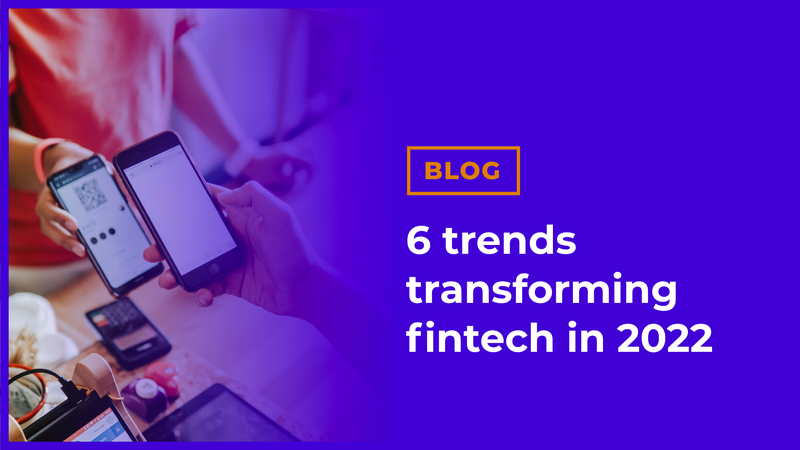
The fintech landscape is rapidly evolving, driven by significant growth and innovation throughout 2022.
Fintech enters 2022 with record strength. 2021 saw the sector become more powerful and globalized than ever before, with user numbers around the world up 337% from 2020! This era of expansion is leading to fast change - and your fintech app needs to keep up. In this article, we’ll outline the current trends in fintech that will define the sector’s future. In addition, running down the crucial elements of generating mobile app engagement in 2022, ranging from the essentials to gamification examples like points.
- How fintech is changing: the state of play
- The future of fintech is growth
- 6 essential fintech trends you need to know in 2022
- What every fintech app needs for mobile app engagement
- Why trust is make or break - and how to create it
- TLDR
How fintech is changing: the state of play
Comparing 2021 to 2020, investment in fintech nearly doubled! Hidden within that statistic is an incredible fact that the fintech fever has truly gone global. Since 2018, over 100 new unicorns have appeared every year, all of them spread across different continents of the world.

This graph illustrates the global spread of fintech unicorns, highlighting the industry's expansion beyond traditional markets and demonstrating how mobile app engagement is a worldwide phenomenon.
Indeed, the gap between developed and developing markets is closing when it comes to fintech. In regions such as South America, officials estimate that hundreds of millions of people live without a bank account. All the while, the number of mobile users in South America is skyrocketing! The World Bank thinks that fintech is key to boosting the use of bank accounts across much of the emerging world, and you can already see it happening.
In short, the facts all speak to unprecedented growth! To be sure, the success is especially clear when you compare the events in fintech against other industries.

A comparison of industry investment shows that fintech is out-performing many other sectors, signaling strong investor confidence and the high potential for growth.
The future of fintech is growth
At the moment, fintech looks to be heading towards enormous user growth. While the whole industry is doing well, the apps that garner the most attention from investors are mass-appeal B2C verticals, such as payments and stock investments. Simply put, these apps have the power to attract millions of users from across the population! Everyone needs a bank, and more people than ever are getting into the stock market.
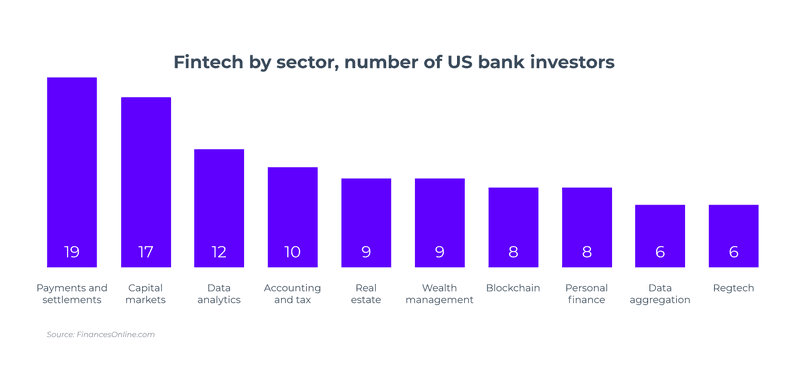
Mass-appeal B2C verticals like payments and investments are attracting significant attention, pointing to where future growth will be concentrated.
The predicted boom is already well underway, and user growth has been exceptional. From 2020 to 2021, the number of daily active users for fintech apps grew a whopping 337%! What does this mean for the future of fintech apps? For sure, the next few years will mean expansion into new markets and an increased focus on scalability.
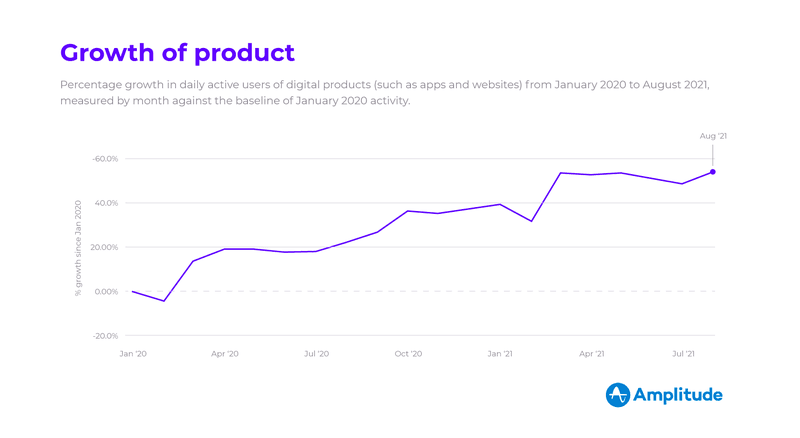
The remarkable increase in daily active users for fintech apps underscores the massive expansion and user adoption underway.
However, there is more to it than that. Game-changing innovations have made new and amazing things possible. Not just in technology, but also in-app development! We’re seeing more gamification examples that keep users motivated and engaged. Tech-wise, recent years have seen cross-border payments become mainstream, have made stock investing easier than ever, and turned instant bank transfers into a common sight. What is to come in 2022 will build on those advances.
6 essential fintech trends you need to know in 2022
This year, fintech can expect to double down on some things that were already popular in 2021, as well as the widespread adoption of new technologies. Here are the 6 prevailing trends likely to have the biggest impact:
#1 Artificial intelligence is improving, and its integration is speeding up
If anything is going to change fintech in 2022, it will be artificial intelligence (AI). Consultancy firm McKinsey estimates that advances in AI may generate up to $1 trillion additional value for the global banking industry every year.
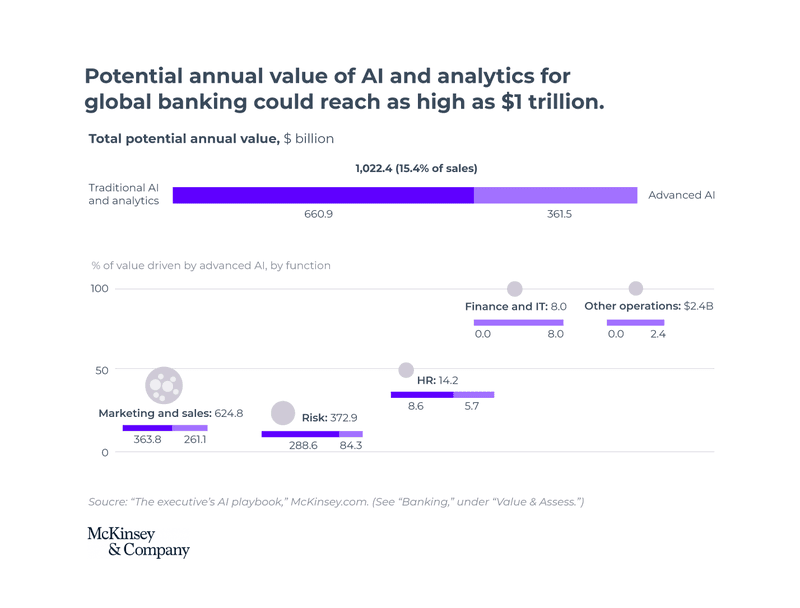
This chart visualizes the potential trillion-dollar value AI could add to the banking industry, emphasizing its transformative power for mobile app engagement.
How will AI achieve this incredible return on investment? Simply put, smarter algorithms give apps the power to better personalize their platforms to each individual user, resulting in an improvement to metrics across the board, from cheaper customer acquisition, higher levels of user retention, and more active mobile app engagement.
For one, AI will help create seamless omnichannel experiences, lowering the barriers to engagement from users interacting with your brand in their preferred method. But more specifically, there are other ways that AI will boost the industry, such as better enabling ‘embedded finance’.
#2 New tech means a new boom in ‘embedded finance’
Embedded finance is a relatively recent development, thanks to the many ways customers can now interact with their mobile and manage their finances. In short, this means the seamless integration of financial services into non-financial products. Think voice banking with Amazon Alexa or easily make payments from your smartwatch. Experts believe it will become a huge part of fintech. Estimates show it will grow an impressive 10x bigger in value between 2020 and 2025.
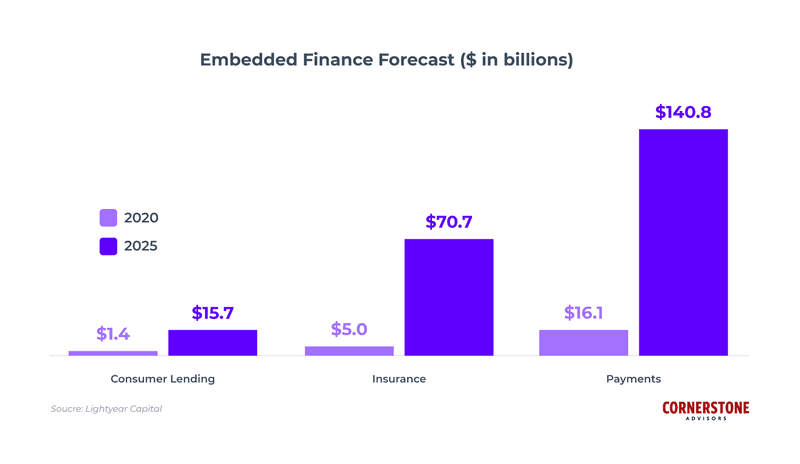
The projected 10x growth in embedded finance by 2025 highlights a major shift toward integrating financial services into everyday platforms, a key area for gamification and engagement insights.
In China, embedded finance is already the norm. In 2021, nearly 80% of smartphone users made payments on mobile, compared to just 22% in Germany! Of those in China who do pay through mobile, 90% of Chinese mobile transactions go through WeChat - a social media platform - or AliPay, the payments arm of Alibaba, China’s Amazon. Indeed, this shows the way forward that is yet to emerge in Europe and the USA.
#3 Contextual services will bring fintech closer to their customers
In relation to embedded finance, contextual services will be the next big thing. In practice, this contextualization allows apps to interact with users in a way that fits with their individual context. Nobody wants to receive offers or prods to try features that don’t attract them. That would become clutter, rather than provide value! To do this, contextual services use gamification examples like personalized notifications.
New to gamification? Catch up to speed with our ‘What is Gamification’ page!
Research shows contextual notifications boost push notification conversion rate by 40%! The essence of contextual notifications is giving users messages that are tailored to them and sent at the most relevant time. Ultimately, the big challenge here is to understand the customer and their buying behavior. Increasingly, AI is enabling product managers to know these things.
#4 Sustainability will continue to hold importance for consumers
The race to net zero is taking off, and fintech will be a crucial part of the picture. By 2030, sustainable business models are set to unlock revenues of as much as $12 trillion. These earnings - and carbon savings - will be made by leveraging fintech’s talents for digitalization, technology, and data. BBVA, for example, is investing $200 billion to make their organization more environmentally friendly. What’s more, their program BBVA Game uses gamification examples like points to reward users who watch videos about these important subjects.
Gen Z, those born after 1998, are a huge reason why banks are seeing this as the future, and this will continue in 2022.
#5 Gen Z is a crucial generation for fintech apps - more than ever
In short, 66% of Gen Z’ers use fintech regularly, making them a heavily represented group. This number is likely to increase as the generation ages, and as their purchasing power rises. Notably, this demographic supports the decision of banking to go sustainable. In fact, 94% of Gen Z expect companies to urgently address climate change! On this note, there are more challenges ahead for fintech.
#6 Regulators are beginning to seriously scrutinize fintech
Fintech’s growth comes with caveats. The more money the sector makes, the more attention governments will pay to it. Indeed, large fintech apps have already come under the hammer. After an incredible period of growth for N26, one of Europe’s largest neobanks, the German authorities put a cap on the number of new users the app can sign monthly. In 2022, both regulators and customers alike expect safe and responsible platforms.
What every fintech app needs for mobile app engagement
Given the effects of these trends, what does every fintech app need to face up to the challenges involved? In short, consumers are resolute in what the most important features of a fintech app are.
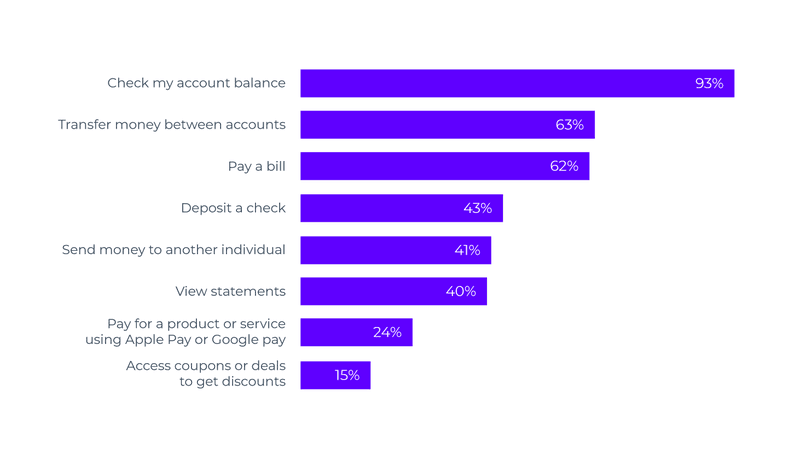
Consumer survey results show that basic functions like security and ease of use are paramount for fintech app users, which provides key insights for improving engagement.
However, long-lasting mobile app engagement requires more than just basic functions. Gamification examples such as points, rewards, and even badge systems can be used to enhance your platform. For example, Revolut’s rewards program or Monobank’s badge system has been shown to have motivated users to continue banking. Not to mention, a higher level of mobile app engagement can lead to a closer brand relationship, and in turn an increased level of trust in your product/service.

This visual compilation of gamification elements demonstrates how features like points, badges, and rewards can effectively drive user engagement in fintech applications.
Why trust is make or break - and how to create it
Belgian fintech expert Bjorn Cumps notes that “traditional finance players are still our most trusted advisors, even today – even after the financial crisis”. Because of this, he adds, most people still use their fintech app only in addition to their traditional bank. But he predicts it won’t be that way for long.
When it comes to handling customers’ money, trust is of course crucial. You can create trust with your users by showing you are attending to their needs. Gamification examples can power up your trust-building strategy in many ways, for example by creating personalized and contextual notifications that show you know what makes your users tick. These gamification features should be used to leverage positive feelings in the customer, such as how BBVA awards points for watching financial education videos.
In addition, a high level of customer service is essential. Research shows that 1 in 3 customers would leave a brand they ‘love’ after just ONE bad experience! Simply put, the market is maturing, and people know what they want and what they can expect. There is no way around it - to be successful in 2022, you need to offer what your users are asking for. If not, customers are now in the position to take their business somewhere else.
TLDR
- Daily active users on fintech apps up 337% between 2020 and 2021.
- At the same time, investment in fintech nearly doubled!
- Everything points to growth, with the sector expanding globally.
The 6 trends that will affect fintech in 2022:
- Artificial intelligence is improving, and its integration is speeding up!
- New tech means a new boom in ‘embedded finance’.
- Contextual services will bring fintech closer to its customers.
- Sustainability will continue to hold importance for consumers.
- Gen Z is a crucial generation for fintech apps - more than ever.
- Regulators will start to seriously scrutinize fintech.
To tackle these trends and take advantage of the growth in fintech, apps need to become experts in mobile app engagement. This involves gamification examples like the points in Revolut’s rewards system, or badges in Monobank’s app - both very successful apps!
Related Posts
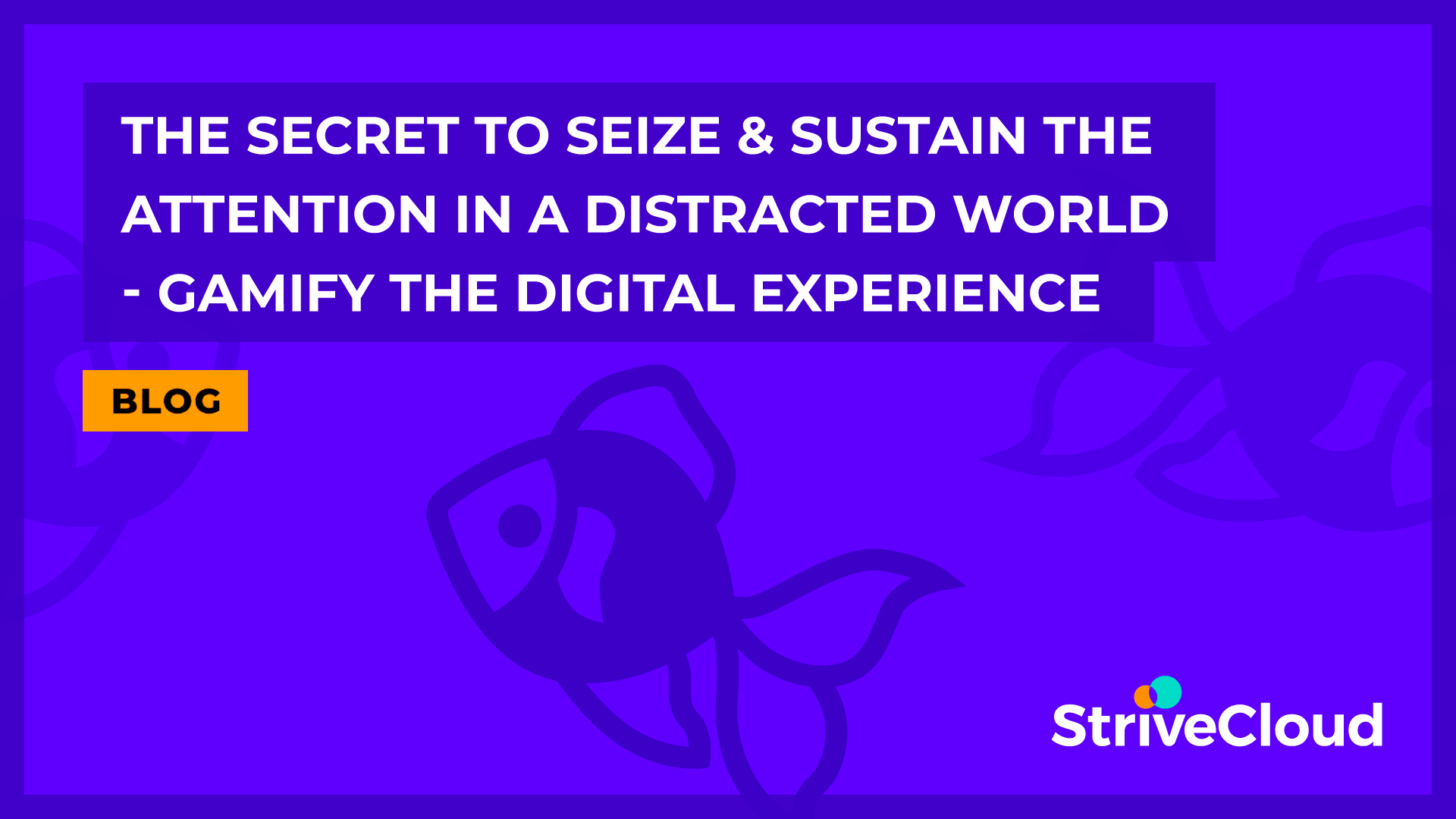
Seize & sustain the attention in a distracted world - digital engagement
With consumers at the wheel of their own digital experience and an overflow of content to consume it’s becoming increasingly difficult to capture someone’s attention. However platforms like Facebook or Instagram manage to suck you into their system all the time. Lots of digital experiences leverage gamification to support their engagement goals and supercharge growth. So how do you create long-term digital engagement? How do you get your audience hooked?
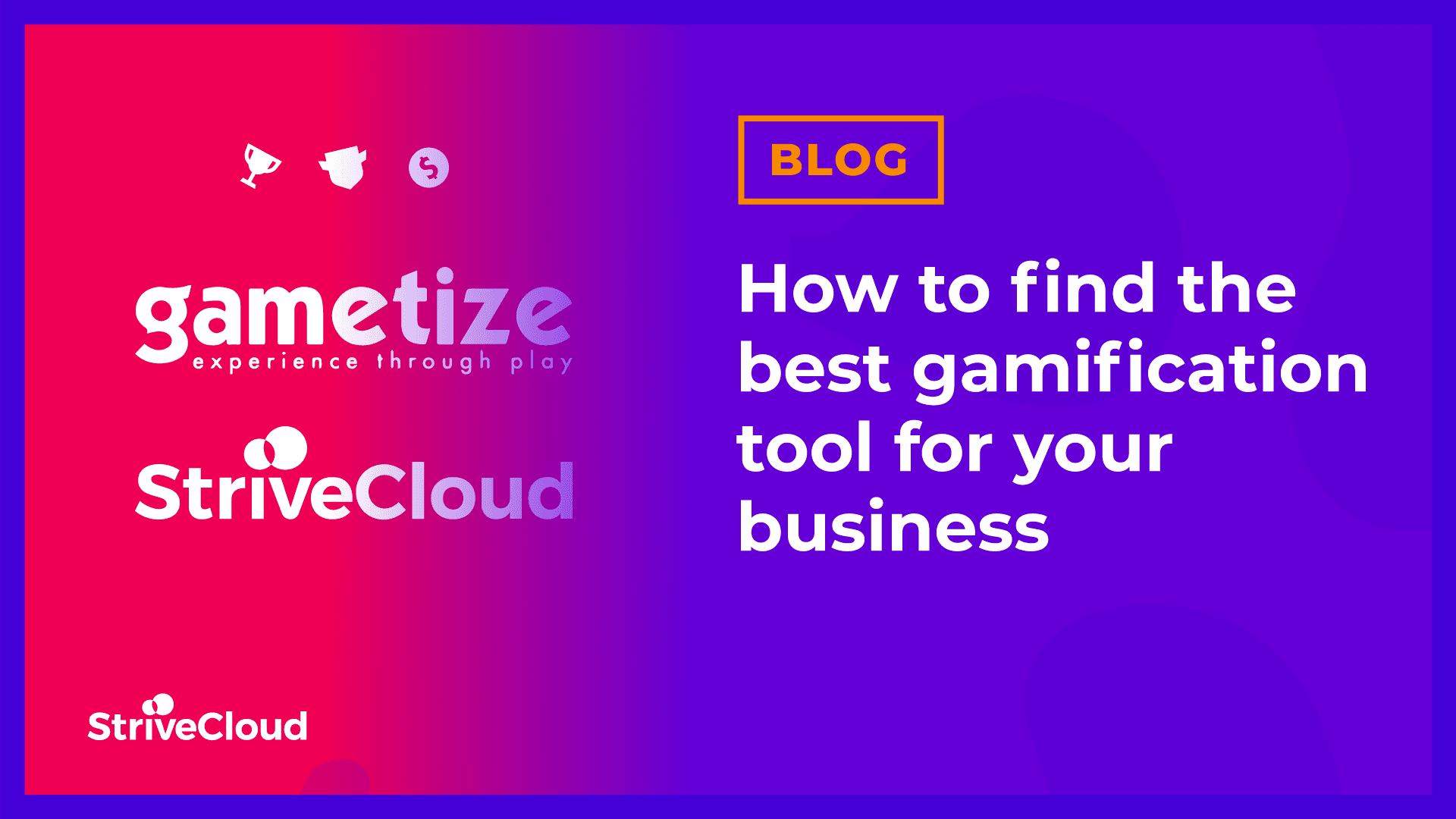
How to find the best gamification tool for your business
Gamification helps you create digital experiences that get users hooked. However, picking the right tool can be a great challenge. In this post we compared two of the leading gamification solutions out there on price, features and level of support. Want to find out which tool will help you achieve your business goals? Find out in the blog!

